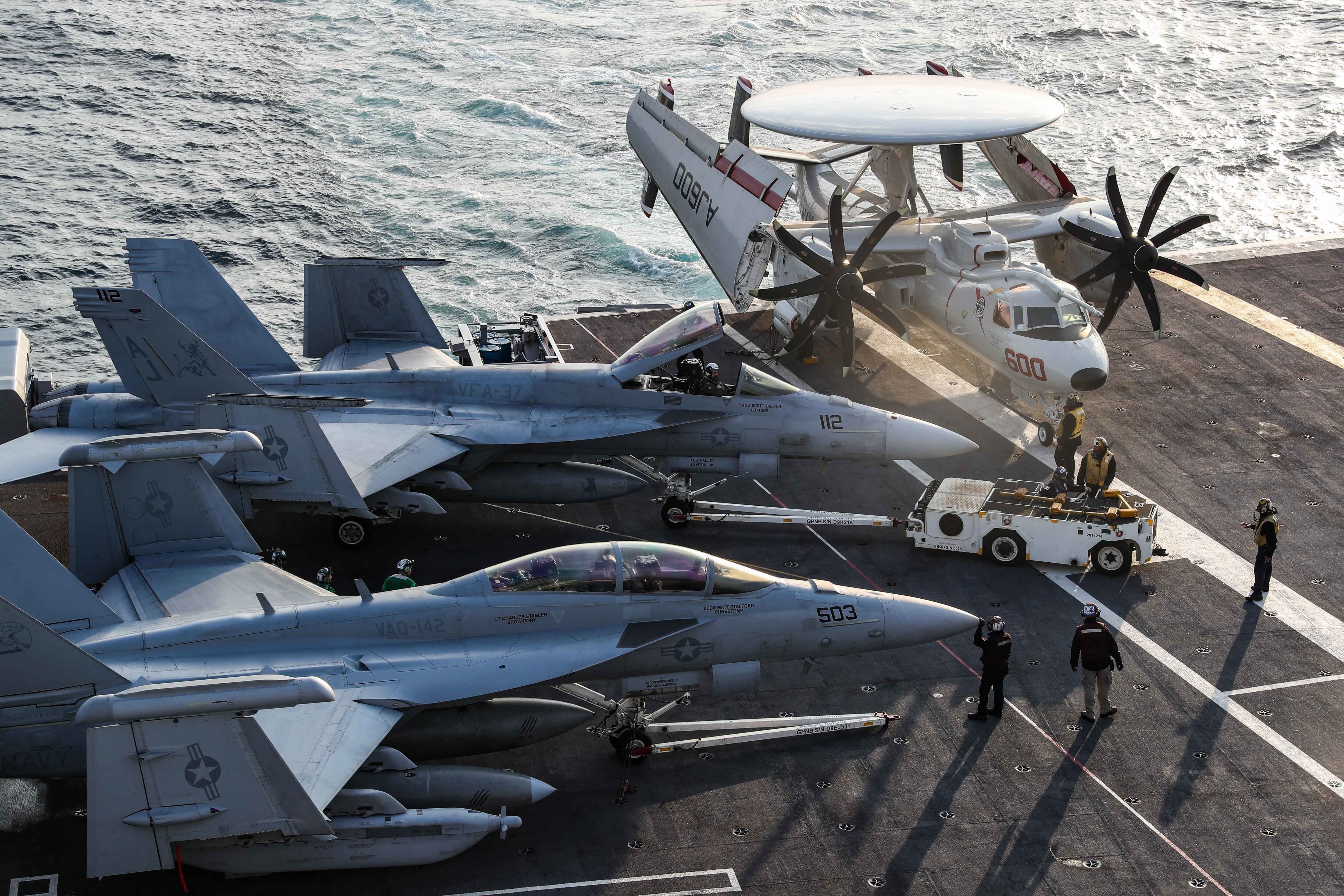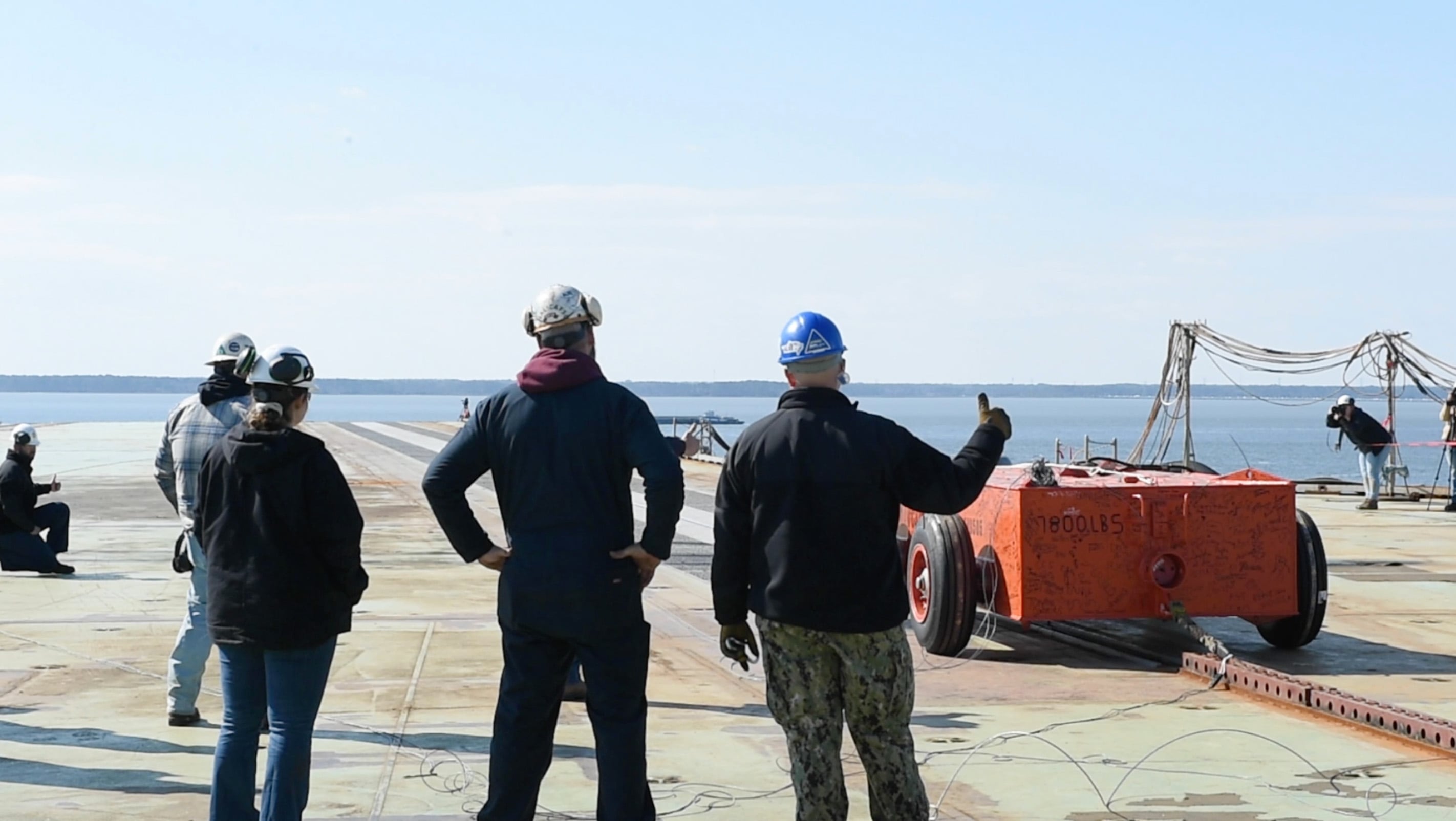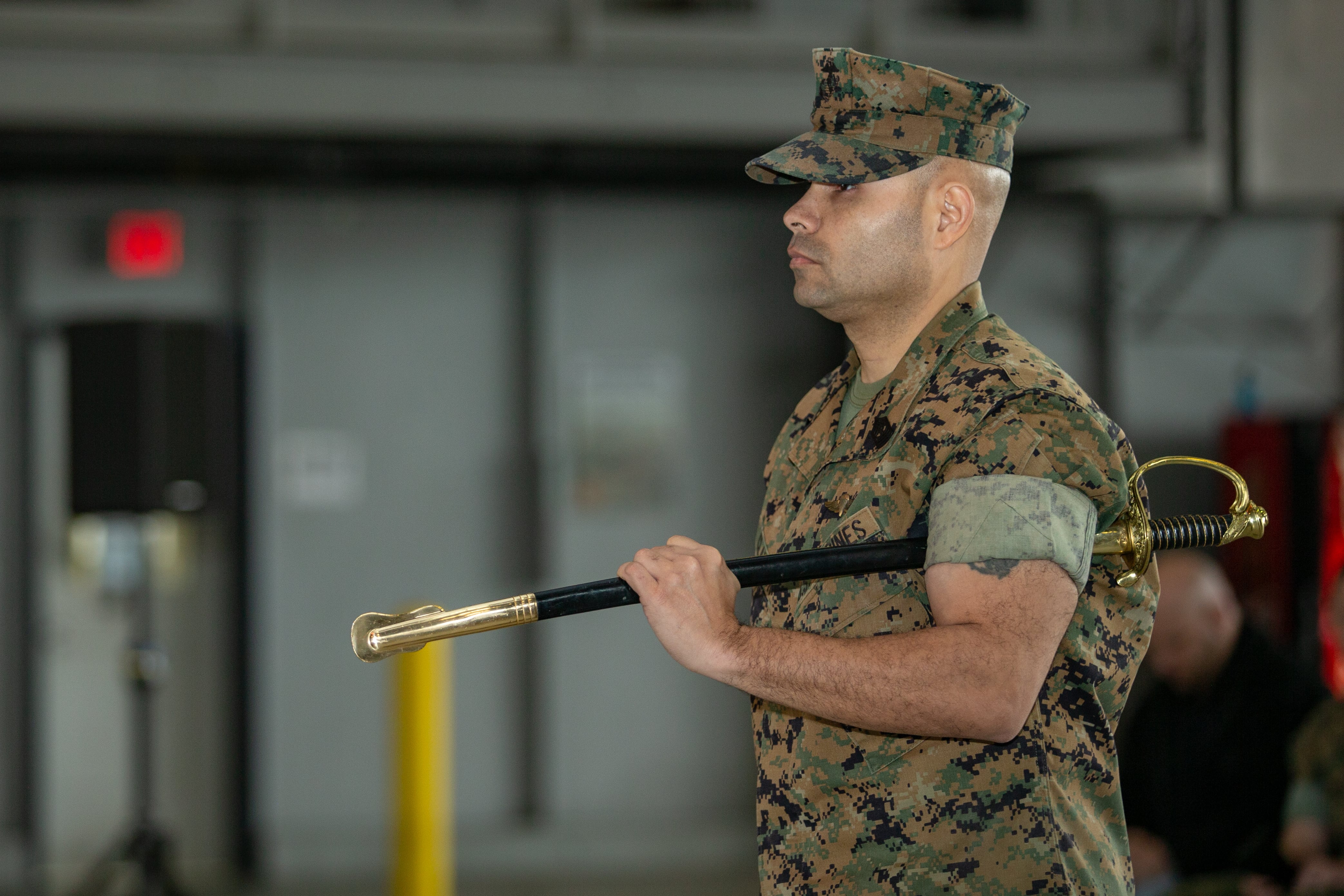Topside testing of the Electromagnetic Aircraft Launch System has begun aboard the Navy’s second Ford-class aircraft carrier, the future John F. Kennedy.
The new Electromagnetic Aircraft Launch System, known as EMALS, is one of more than 20 new technologies installed aboard the Ford-class of carrier. The system propels aircraft from the flight deck and significantly reduces manning needs compared to the steam-powered catapult systems on Nimitz-class carriers.
Newport News Shipyard is now conducting so-called “dead load” testing, where it hurls “large, wheeled, car-like structures of graduated weights up to 80,000 pounds” off the bow of the carrier and into the James River, according to American shipbuilder HII. The exercise aims to use dead loads that are similar in weight to actual aircraft.
“The first dead-load launch off the flight deck is a historic moment for [pre-commissioning unit] John F. Kennedy, and a testament to the power of great teamwork between our JFK crew, HII team, and NAVAIR engineers,” Capt. Colin Day, commanding officer of the carrier, said in an HII news release.
“I’m particularly proud of our Air Department and the hard-working Aviation Boatswain Mates who worked tirelessly alongside the engineering and testing teams to get us to this critical moment,” Day said.
RELATED

Unlike the Nimitz-class steam catapult system, EMALS utilizes stored kinetic energy and solid-state electrical power conversion to complete its mission. This allows a “high degree of computer control, monitoring and automation,” according to Naval Air Systems Command.
The system was one of several that came under scrutiny due to delays and cost overruns on the Ford. But Navy leaders assured reporters in 2022 that the system was up and running smoothly.
For example, the Ford’s Air Boss Cmdr. John Peterson, told reporters in October 2022 that the EMALS system dramatically changes operations and streamlines manning requirements.
“The change between steam and electric, it’s pretty wide ranging from the standpoint of our manning and equipment,” Peterson said. “So, from a manning perspective, we’re an optimally manned carrier.”

“What that means is we’ve got less sailors but the equipment allows us to operate, launch and recover aircraft with far fewer sailors,” Peterson said. “And, depending on the watch station, we have one watch station where 24 sailors on a Nimitz-class carrier are now replaced by a single sailor, working in an air-conditioned space.”
The JFK is under construction at HII’s Newport News Shipyard in Virginia, and commissioning is slated for 2025.
Topside testing began last month, following “no-load” testing to try out the shuttles independently, according to HII.





